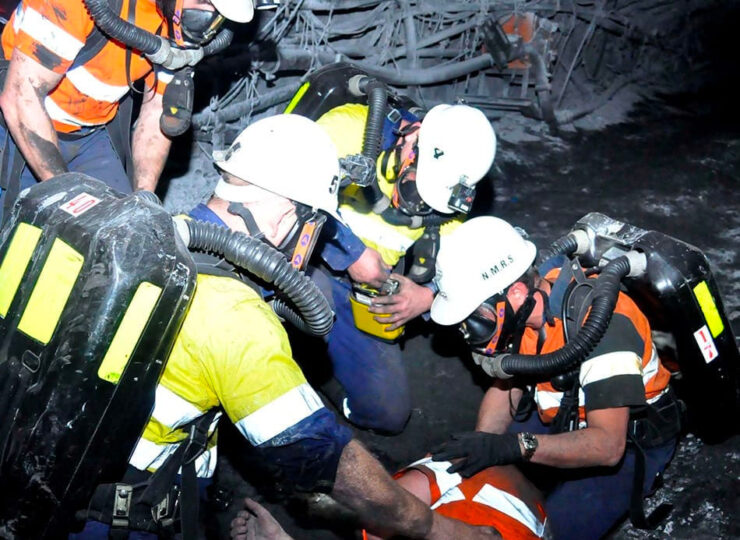Overview
The Bellbird disaster of 1923 appears to have been the key event in a tumultuous industrial & tragic start for coal mining in the 20th century which led to the formation of mines rescue.
Twenty-one miners lost their lives on Saturday 1 September, 1923. A coronial inquest and Royal Commission were conducted, which extensively debated the value of breathing apparatus and the establishment of central rescue stations. A Bill to establish mines rescue stations was tabled in the NSW parliament on 13 November 1924.
The Mines Rescue Act was assented to in September 1925 and became operational on 31 December 1925. The first mines rescue station in NSW began operations on 20 March 1926 at Abermain. Stations in Newcastle, Wollongong and Lithgow opened shortly thereafter. Mines rescue stations in NSW were based on the British model of centralised stations rather than the European model of brigades members and equipment at each mine.
Apart from the strong cultural connection between Australian and British mining communities, other factors involved in this decision included lower costs of operations and higher levels of training and equipment maintenance provided by full-time permanent corpsmen. The original mines rescue stations operated independently to a large degree with each area controlled by a committee of industry representatives. Funding was obtained from a levy imposed on production from mines in the district. This has evolved over time resulting in greater consistency and cooperation across the State.
Mines Rescue Pty Limited is now the controlling authority for all rescue stations in NSW which ensures common management and operational procedures as well as standard equipment. This ensures the mutual assistance scheme will provide rapid deployment of rescue teams both within and between districts in the event of a major or protracted emergency.
The nature of mines rescue activities has changed. In 1983, Abermain Rescue Station transferred to Singleton Heights. This signalled a greater involvement with open cut coal mines.
Specialised courses in vehicle accidents, use of ropes and working at heights were developed to respond to risks encountered in a surface mine environment. It was also recognised that most surface incidents would be resolved before external assistance would arrive. Surface mines therefore needed to have on-site equipment and people with the appropriate skills to rescue victims and preserve life. Underground mines rescue has also changed focus in recent times. Initially established to use breathing apparatus to retrieve trapped miners from irrespirable atmospheres, it is now supplementing this with training miners in self-escape techniques. The first few minutes after an incident are critical in determining outcomes. Mines rescue trainers are key providers of whole of mine training in the use of breathing apparatus, emergency procedures and testing of escape systems.
Legislation and economics have also allowed the range of activities to be expanded beyond immediate rescue of trapped miners. Discretionary functions in coal and general industry are providing training in a range of related disciplines with the benefit of offsetting costs to the coal mining industry. Today almost half of the total revenue for mines rescue is derived from commercial discretionary sources.
Today, all Mines Rescue stations feature purpose-built facilities (many Mines Rescue stations feature training galleries that replicate an underground mining setting), with real equipment to simulate real-world scenarios. This includes the capacity to combat actual fires whenever feasible and utilise genuine breathing apparatus. Virtual reality technology is also employed to familiarise students with safety hazards within a secure environment. The newest mines rescue stations are Moolarben, which opened its doors on 1 December 2017, and Gunnedah which has been in operation since 2023.
Share this page

